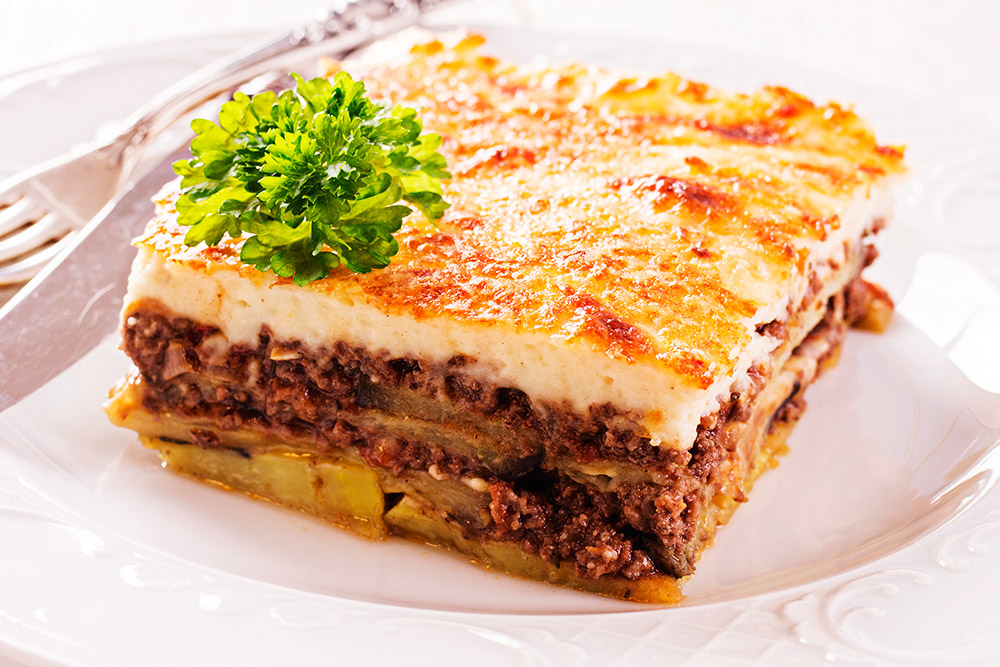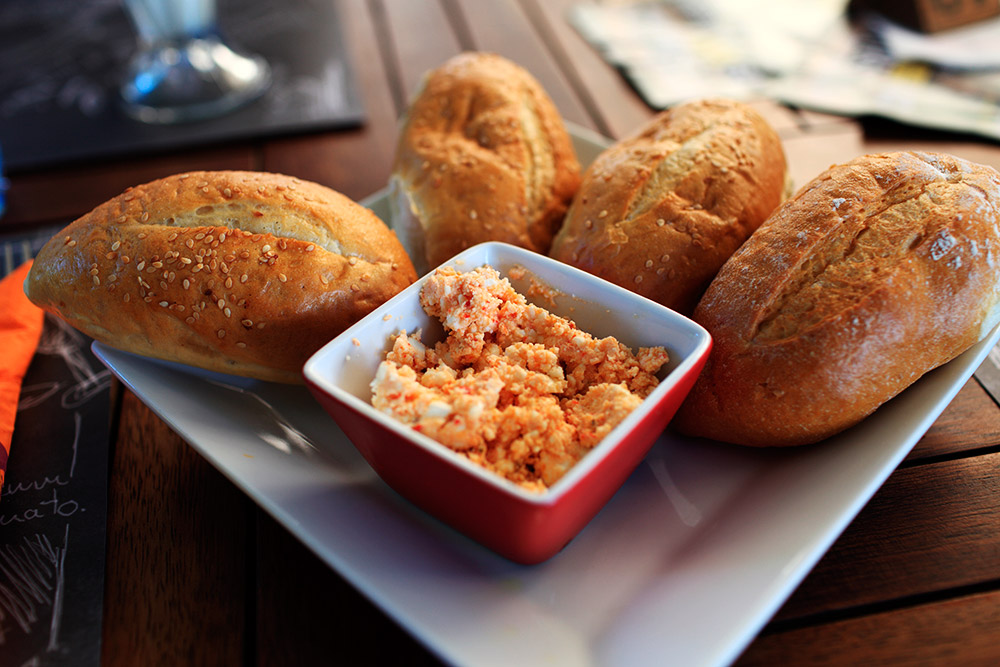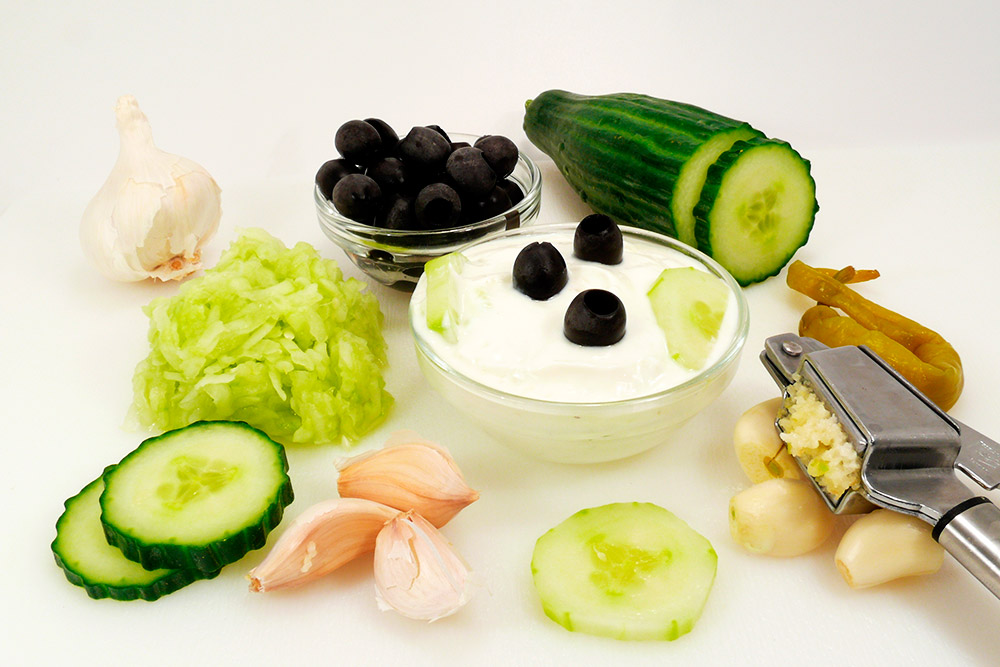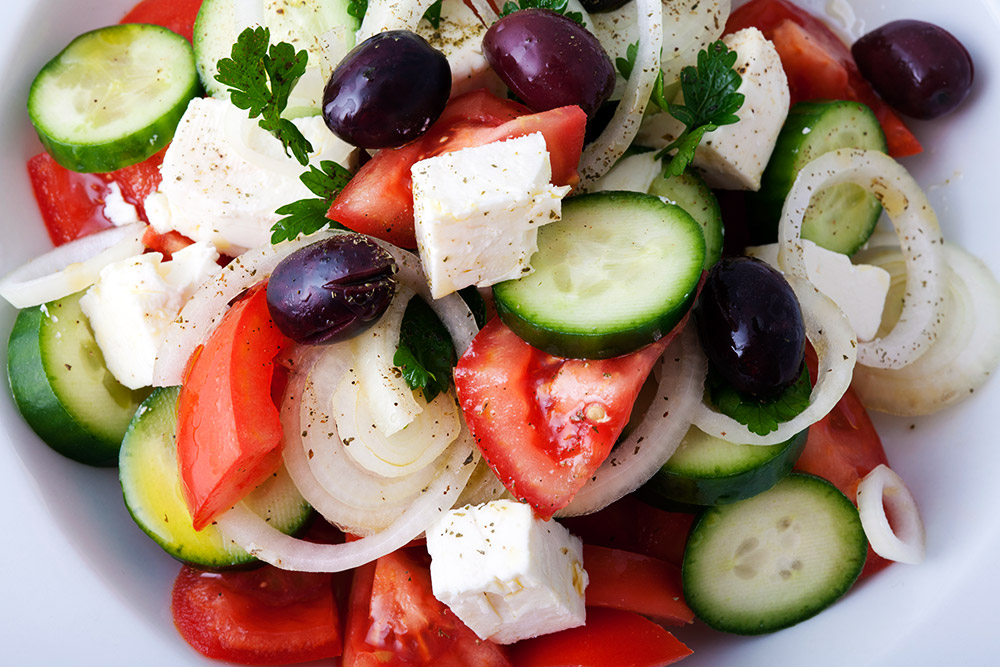
Taste Greece
Greek cuisine has a long tradition and its flavors change with the season and its geography. Greek cookery, historically a forerunner of Western cuisine, spread its culinary influence – via ancient Rome – throughout Europe and beyond. It has influences from the different people’s cuisine the Greeks have interacted with over the centuries, as evidenced by several types of sweets and cooked foods. The most characteristic and ancient element of Greek cuisine is olive oil, which is frequently used in most dishes. It is produced from the olive trees prominent throughout the region, and adds to the distinctive taste of Greek food.
Greek cuisine uses some flavorings more often than other Mediterranean cuisines do, namely: oregano, mint, garlic, onion, dill and bay laurel leaves. Other common herbs and spices include basil, thyme and fennel seed. Many Greek recipes, especially in the northern parts of the country, use “sweet” spices in combination with meat, for example cinnamon and cloves in stews. A great variety of cheese types are used in Greek cuisine, including Feta, Kasseri, Kefalotyri, Graviera, Anthotyros, Manouri, Metsovone and Mizithra.
Too much refinement is generally considered to be against the hearty spirit of the Greek cuisine, though recent trends among Greek culinary circles tend to favor a somewhat more refined approach. Dining out is common in Greece, and has been for quite some time. The Tavern is widespread, serving traditional Greek home cooking at affordable prices to both locals and tourists. In addition, some traditional Greek foods, especially souvlaki gyros, tyropita (cheese pie)and spanakopita (respectively, cheese and spinach pie) are often served everywhere in the country.

Moussaka

Tirokafteri

Tzatziki

Gyros

